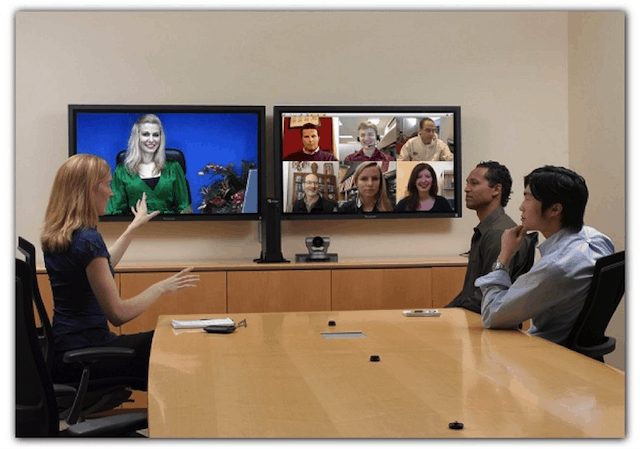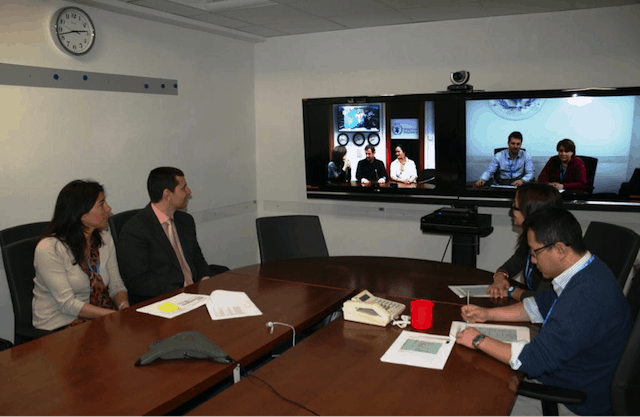
In this global economy, human resources departments are increasingly expanding their geographical range in the search for the right talent. Internal employee training has become a proven method of successful business management, leadership development and employee motivation. HR departments now prefer integrative and engaging communication systems that foster employee interaction. Therefore, it’s no surprise that HR departments are expanding their use of video conferencing services to meet their departments’ needs.
Finding and Interviewing Global Talent
Video conferencing is increasingly becoming the preferred telecommunication method for recruitment with specialized services being rolled out by companies such as the Blue Jeans Network catered towards addressing the requirement of businesses. The search for the perfect candidate can lead to another part of the country or even out of the country. The use of video conferencing removes the need for travel, as well as the costs associated with such. Rather than a telephone interview, or a question and answer segment over email, video conferencing provides both the HR professional and the candidate the benefit of seeing each other.
Employee Training and Retention
Internal training is an integral part of every HR department. Keeping employees updated on the latest industry developments and continually developing their skills are corporate practices that give companies the edge over their competitors. Training, done the traditional way, is costly and logistically complex. Video conferencing offers a dynamic training environment with live interaction. Training budgets are reduced as most associated administrative costs become obsolete. In addition, these training videos can be recorded and reused for employees who were absent, as well as for future incoming staff. Experts no longer need to be flown to and accommodated at various company locations, usually at great expense to the company. From their chosen location and via video conference, an expert can disseminate valuable teachings to employees, creating a global classroom.

Increased Workforce Engagement
Everyone loves a visual. In lieu of an internal office memo announcing company developments, HR professionals can keep employees engaged through video conferencing. Visual data can be shared and discussed, and will encourage staff interaction with management. This gives an otherwise impersonal event a personal feel, which in turn elevates employee morale. The result is improved information-sharing and a greater comprehension of the announcement.
More Productive Meetings
Train and bus delays, flight cancellations and road closures can result in time lost and absenteeism. Video conferencing eliminates the need to travel. Therefore, saving hours of commuting time to and from a physical meeting place means increased company productivity. Furthermore, HR departments gain a larger participation; the convenience of a video meeting means more people are available to take part. There are also tools that facilitate the recording of the video meeting, thus there is no need to take notes. And it means there’s an accurate record of the meeting, which employees can refer back to.
Quick Response Time
News and developments are happening in real time so HR departments, and by extension companies, need to be able to respond in a timely matter to any incident. Video conferencing provides an instantaneous and efficient tool in that regard. Information and ideas can be exchanged immediately. Top-level management can discuss solutions and make a decision without the need for elaborate planning and travel. Then these decisions can be disseminated to employees as soon as they are made without the need for inconvenient and detrimental delays.
Giving Value to Remote Workers
Remote workers are 53 percent more likely to put in extra time and can save a business an average of $11,000 over a year, according to Inc Magazine. However, because most remote workers spend very few hours in the office, they can potentially experience a feeling of being disconnected. Remote workers may begin to harbour feelings of not being vital to a company, especially when compared to in-house employees. This can lead to unmotivated employees and diminished work quality. Video conferencing allows remote employees to have interaction with in-house staff, as well as with other remote colleagues, thus creating and nurturing a positive feeling of inclusion.
Flexible Work Environment
A flexible work environment can help companies reduce costs, increase work productivity and attract talent that otherwise might have been unavailable. Flexible working conditions can be achieved via video conferencing. Commuting times take a sizable chunk out of an employee’s day. Nearly 2 million Americans commute 90 minutes or more each way, according to the U.S. Census Bureau. Removing this lengthy travel time, even for a few days, can result in a less stressed employee with a higher morale. In addition, employees who face unexpected challenges and need to be away from the office can benefit from this flexibility. The company also benefits because such an environment guarantees business continuity.
Video conferencing is an essential tool for every HR department. It defies distance, removes cultural barriers, and enhances communication and saves valuable time and costs, all of which can lead to increased productivity.